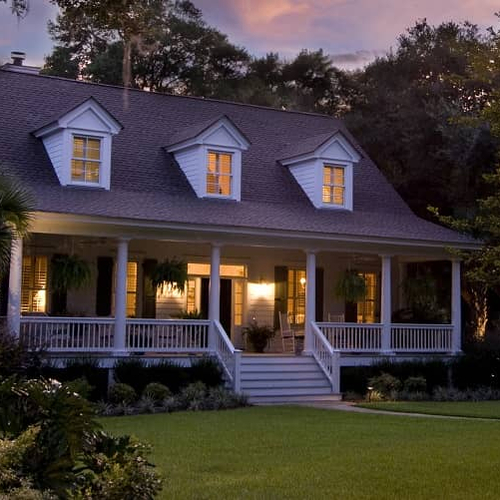20-year vs. 30-year mortgage: How to decide
Apr 26, 2024
•7-minute read
When you’re ready to buy a home, you have plenty of choices for a mortgage loan. Among the main types of mortgages you can choose are 20-year or 30-year fixed-rate loans.
While these mortgage types might be similar, they have some key differences. You’ll have to determine whether you’re more interested in smaller monthly payments or in paying the least amount of interest when deciding between these two home loan types.
20- vs. 30-year mortgages: Understanding the difference
Buyers often choose 20-year or 30-year fixed-rate mortgages because of the lower monthly payments and predictability that come with them. Let’s take a closer look at the similarities and differences between the two loan types.
What is a 30-year mortgage and how does it work?
The 30-year fixed-rate mortgage remains a popular one. As its name suggests, this mortgage loan has a term that lasts for 30 years, meaning that you have 3 decades to pay it back through regular monthly payments. It also has a fixed interest rate – your loan’s rate on its first day will be the same as on its last.
When applying for a 30-year mortgage, lenders will consider several factors when determining whether to loan you money. First, they’ll study your three-digit FICO® Score, a number that gives lenders a quick snapshot of how well you’ve handled your credit and paid your bills. Most lenders consider FICO® Scores of 740 or higher to be excellent ones, but you can often qualify for a 30-year mortgage even if your scores are in the lower 600s.
Lenders will also consider your debt-to-income ratio or DTI. This ratio measures how much of your gross monthly income your total debts consume each month. Most lenders want your total monthly debts, including your new mortgage payment, to equal no more than 43% of your gross monthly income.
Mortgage lenders will also pull your three credit reports, each maintained by the national credit bureaus of ExperianTM, Equifax® and TransUnion®. These reports list your open credit accounts and loans and how much you owe each of them. They also list recent missed or late payments, and negative financial events such as recent bankruptcies or foreclosures.
What is a 20-year mortgage and how does it work?
Lenders will consider everything we’ve discussed above when you apply for a 20-year mortgage, too. This type of mortgage acts the same as a 30-year version – you’ll still pay back your loan in monthly payments with interest. The big difference: With a 20-year fixed-rate mortgage, you have 20 years to pay back your loan instead of 30.
Your monthly payment will be higher with a 20-year mortgage because you are paying back your loan in a shorter amount of time. The positive? You won’t have to pay as much in interest over the life of your loan with a 20-year mortgage, both because these loans typically come with a slightly lower interest rate than a 30-year fixed, and because of the lower number of months it takes to repay these shorter-term loans.
Comparing fixed mortgage rates: 20-year vs. 30-year
Home buyers like longer mortgage terms – such as 30-year and 20-year loans – because they historically have come with affordable interest rates. And a lower interest rate will reduce the size of your monthly mortgage payment.
The average interest rate on mortgages has fluctuated over the years. Freddie Mac data shows that the average annual interest rate on 30-year fixed-rate mortgages hit its highest level in 1981 when it stood at 16.63%. Compare that to today, where Freddie Mac has said that the average rate on a 30-year fixed-rate mortgage is 5.00%.
No one can predict whether interest rates on either 30-year or 20-year fixed-rate mortgages will rise or fall in the coming months. What’s important to remember is that even if they do rise or fall slightly, mortgage interest rates today remain extremely low historically.
| $200,000 loan amount | 20-year fixed | 30-year fixed |
|---|---|---|
| Mortgage Rate: | 4.5% | 5% |
| Monthly Payment: | $1,265 | $1,074 |
| Monthly Difference Saved: | — | $216 |
| Loan Life Interest: | $103,671.70 | $186,511.57 |
| Loan Life Interest Saved: | $82,839.87 | — |
How to choose your loan term
Let’s say you’re ready to buy a home. How can you determine if a 30-year or 20-year fixed-rate mortgage is right for you?
First, you’ll have to determine whether you’re more interested in a lower monthly payment or if you’d rather pay less in interest during the life of the loan. If cash flow and smaller monthly payments are more important, a 30-year fixed-rate loan might be the smarter choice. If you’re focused instead on paying as little as possible to borrow your mortgage dollars, it might be better to take out a 20-year mortgage. That way, you’ll get a lower interest rate and will pay less interest over the life of their loan.
Another factor you’ll need to consider is how long you expect to live in their new home. The difference in interest payments might not be as important if you intend to move after 5 or 7 years, so you might choose the lower payments of a 30-year mortgage. But if you want to stay in the home for decades, the drop in interest payments – and a 20-year mortgage – might make more sense.
The table below shows the difference in monthly payments and interest depending on whether you choose a 30-year or 20-year fixed-rate mortgage. Note that the monthly payments listed below do not include other costs that are typically included in a mortgage payment, including property taxes and homeowners’ insurance.
20-year mortgage: The pros and cons
The 30-year mortgage is one of the more common mortgage types. Meanwhile, 20-year fixed-rate mortgages don’t get as much press. For many buyers, though, a 20-year mortgage can be a good midpoint between the lower costs of 30-year fixed-rate mortgages and the lower interest payments that come with 15-year fixed-rate mortgages.
With a 20-year fixed-rate loan, you’ll make lower monthly payments than you’d get with a 15-year loan while paying less interest than you would with a 30-year version.
The pros
Lower interest rate: The interest rate with a 20-year mortgage will be lower than those attached to 30-year loans.
Consistent payments: Your interest rate won’t change over the life of your loan. This makes monthly payments more consistent, though they might still rise or fall depending on how much you pay each year for homeowners’ insurance and property taxes.
Equity builds faster: Equity is the difference between what you owe on your mortgage and how much your home is currently worth. If you owe $150,000 and your home is worth $220,000, you have $70,000 of equity. You can borrow against your equity in the form of home equity loans and home equity lines of credit, better known as HELOCs. You can then use the money from these loans on anything. You’ll build equity faster with a shorter-term loan than you will with a longer-term one. It’s important to note that Rocket Mortgage® does not offer home equity loans or HELOCs.
Pays off your home sooner: One of the best advantages of choosing a 20-year loan is paying off the house sooner than with a 30-year mortgage.
The cons
Higher monthly payment: Because a 20-year mortgage has a shorter term, you’ll pay a higher payment each month. That’s because your repayment period is squeezed into a window that is 10 years shorter than what you’d get with a 30-year mortgage.
Savings in interest could even be higher: While you’ll lower the amount of interest you’ll pay compared to a 30-year loan, you could save even more in interest payments if you instead take out a 15-year fixed-rate mortgage. Of course, your payment will be even higher each month with a 15-year loan.
The bottom line: Shorter terms are best if you can afford it
Mortgage loans with shorter terms are often the best financial deal because of the amount of money you’ll save in interest payments. Remember, though, that you should only apply for a short-term mortgage if you can comfortably afford the higher monthly payment. If you can, and you’re interested in paying less in interest, it makes sense to consider either a 20-year or 15-year mortgage.

Dan Rafter
Dan Rafter has been writing about personal finance for more than 15 years. He's written for publications ranging from the Chicago Tribune and Washington Post to Wise Bread, RocketMortgage.com and RocketHQ.com.
Related resources

5-minute read
What is the average mortgage payment?
Wondering what you can expect for your monthly mortgage payments? Learn about the average mortgage payment and the factors that affect it.
Read more

5-minute read
40-year mortgage: An explanation, the pros and cons
A 40-year loan term can bring down your monthly payment in exchange for paying more overall interest and some riskier features. Learn more about 40-year loan...
Read more
6-minute read
15-year vs. 30-year mortgage comparison
A 15-year mortgage is paid over 15 years, while a 30-year mortgage is paid over 30 years. Understand the pros and cons of both loan terms.
Read more